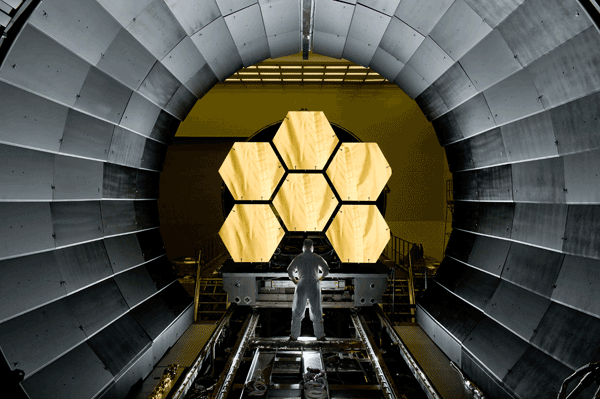August 5, 2012

NASA engineer Ernie Wright looks on as the first six flight ready James Webb Space Telescope’s primary mirror segments are prepped to begin final cryogenic testing at NASA’s Marshall Space Flight Center in Huntsville, Ala. Credit: NASA’s Marshall Space Flight Center/David Higginbotham
NASA technology does some amazing things. Imagine taking one-tenth of an ounce of gold and spreading it so thin that it completely coats something over four feet in diameter. That’s what scientists and engineers did for the primary mirror segments that will fly on NASA’s James Webb Space Telescope.
The Webb telescope has 18 hexagonal-shaped mirror segments that make up its primary mirror. Each of the segments is 1.32 meters (4.3 feet) in diameter, flat to flat. Webb Telescope’s scientists and engineers determined that a primary mirror 6.5 meters (21 feet 4 inches) across is what was needed to measure the light from faint astronomical sources.
To enable the mirrors to most efficiently reflect the infrared light from say, distant galaxies, a microscopically-thin gold coating was needed. Because the Webb telescope is looking at infrared light, gold was the ideal choice because it reflects infrared light so efficiently, especially compared to the reflectivity of bare beryllium. The amazing thing is that Quantum Coating, Inc.’s mirror coating technology allowed just a tiny amount of gold to cover an entire mirror.
“The thickness of the gold coating on the mirrors is only 100 nanometers thick, or a tenth of a micron, which is 1/10,000th of a millimeter,” said Paul Geithner, Deputy Project Manager – Technical for the Webb telescope at NASA’s Goddard Space Flight Center in Greenbelt, Md. “A human hair is roughly 1000 times thicker.”
Advertisement
Learn more about Nasa





